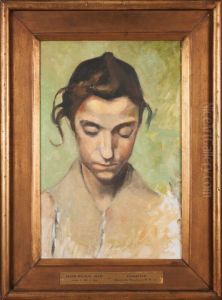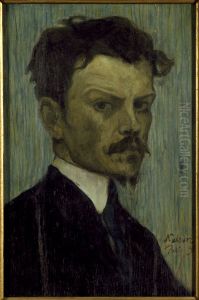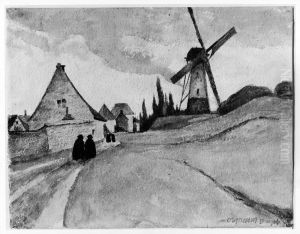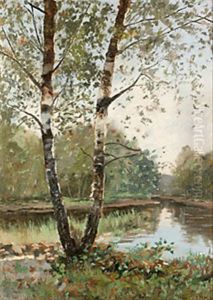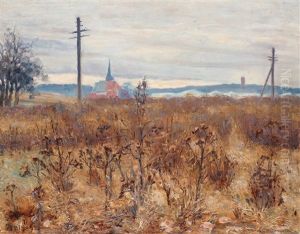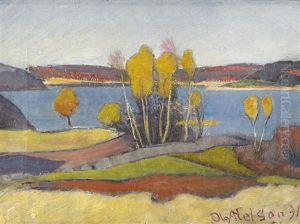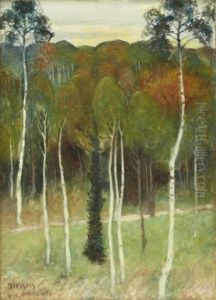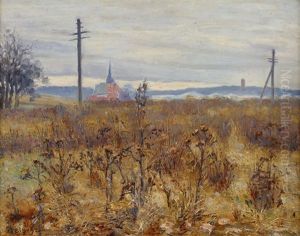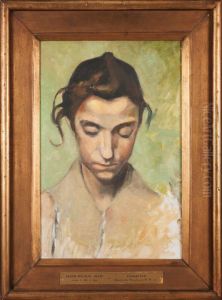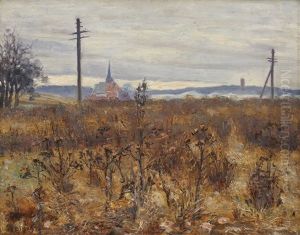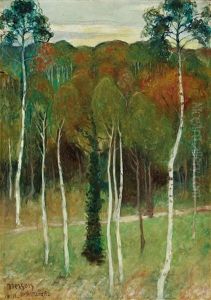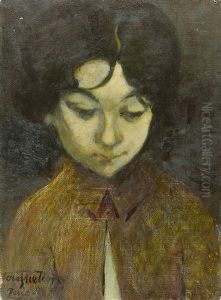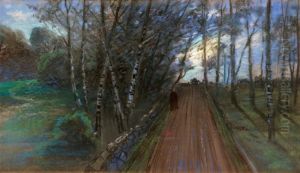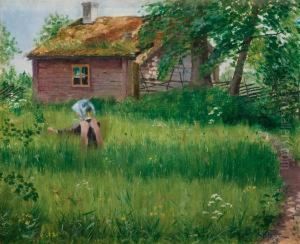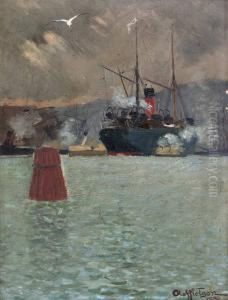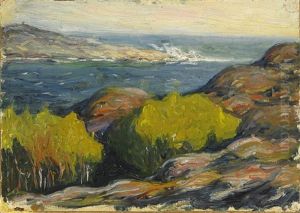Olof Sager-Nelson Paintings
Olof Sager-Nelson was a Swedish painter, born in 1868 in Borås, Sweden. His brief career was marked by an intensive period of artistic production that left a lasting impact on Swedish symbolism and early expressionism, despite his early death at the age of 28 in 1896. Sager-Nelson's work is characterized by a profound sense of mysticism and introspection, often exploring themes of love, death, and existential loneliness through a symbolist lens. His style evolved rapidly, showing influences from various contemporary art movements of his time, including Impressionism and Post-Impressionism, yet always maintaining a distinctive, personal expression.
After studying art in Stockholm, Sager-Nelson traveled extensively through Europe, which greatly influenced his artistic development. His stays in Paris and studies at Académie Colarossi allowed him to immerse himself in the vibrant avant-garde scene of the late 19th century. During his travels, he also spent time in Italy and England, absorbing influences from different cultural and artistic environments. These experiences enriched his palette, leading to the creation of works that blended Nordic melancholy with the broader currents of European modernism.
The most famous of Sager-Nelson's works is perhaps 'The Island of the Dead', which showcases his ability to fuse symbolic content with a haunting, dream-like atmosphere. This painting, among others, reflects his preoccupation with themes of isolation and the transcendent qualities of nature, often rendered through a delicate interplay of light and shadow. Despite his short life, Sager-Nelson participated in several significant exhibitions, contributing to the cultural exchange between Sweden and the wider European art world of the time.
Sager-Nelson's health was always fragile, and he suffered from tuberculosis, which ultimately led to his premature death in Algiers, Algeria, in 1896. His death cut short a promising career, leaving behind a relatively small but potent body of work that continues to captivate art historians and collectors. Today, Sager-Nelson is remembered as a key figure in the transition towards modernist sensibilities in Swedish art, with his works held in high esteem in both national and international collections. His legacy is that of a visionary artist who, in a brief flicker of time, managed to capture the existential ponderings and aesthetic shifts of the turn of the century.

